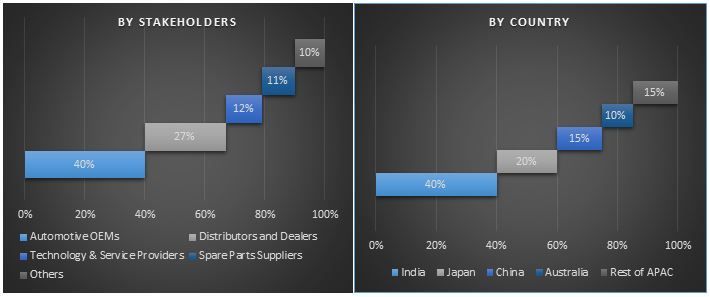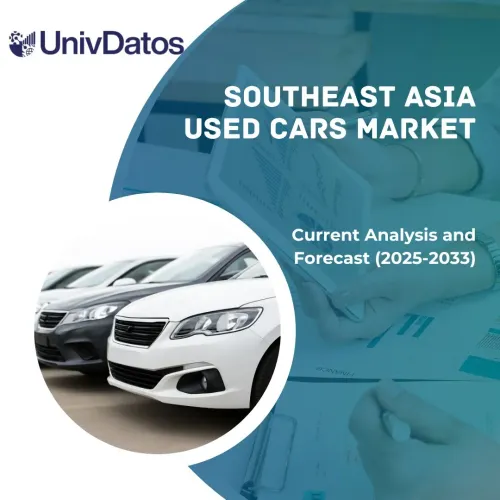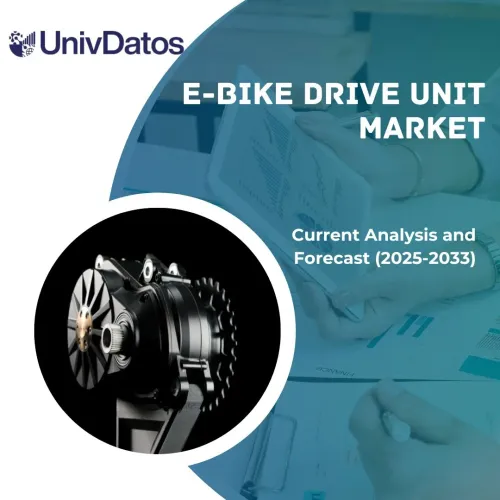- Startseite
- Über uns
- Industrie
- Dienstleistungen
- Lesen
- Kontaktieren Sie uns
Asien-Pazifik-Markt für Automobil-Verbundwerkstoffe: Aktuelle Analyse und Prognose (2018-2024)
Schwerpunkt auf Materialtyp (Polymermatrix-Verbundwerkstoffe, Metallmatrix-Verbundwerkstoffe, Keramikmatrix-Verbundwerkstoffe und Hybrid-Verbundwerkstoffe), Herstellungsverfahren (Handlaminieren, Formpressen, Spritzgießen, Harzinjektionsverfahren) – Einblicke und Prognose, 2018-2024
Der asiatisch-pazifische Raum ist das größte Zentrum für die Automobilherstellung weltweit. In den letzten Jahren ist das BIP der asiatischen Länder erheblich gestiegen, was zu einem Anstieg des Pro-Kopf-Einkommens und des Kaufpotenzials der Verbraucher geführt hat. Mit anderen Worten, die verbesserte Wirtschaft der asiatischen Länder ist einer der Hauptgründe für die steigende Nachfrage nach Fahrzeugen in der Region, was zu einer hohen Nachfrage nach Automobilverbundwerkstoffen geführt hat. Die sich verschlechternde Luftqualität im asiatisch-pazifischen Raum hat die Regierungsbehörden beunruhigt, weshalb in einigen Ländern strenge Emissionsstandards verabschiedet wurden und in einigen anderen in Erwägung gezogen werden. Die wachsende Anzahl von Fahrzeugen in der Region hat die Luftqualität verschlechtert, mit immensen Treibhausgasemissionen (THG). Einige der asiatischen Länder wie China, Indien und Japan gehören zu den größten THG-Emittenten und halten 30 %, 7 % bzw. 4 % der globalen THG-Emissionen. Darüber hinaus ist der asiatisch-pazifische Raum der größte Markt für Elektrofahrzeuge (EVs), und die wachsende Nachfrage nach Verbundwerkstoffen in EVs, um das durch die Batterien erhöhte Gewicht auszugleichen, unterstützt ebenfalls das Marktwachstum. Zusätzlich dazu beherbergt die Region einige der führenden Anbieter von Verbundwerkstoffen wie Toray Industries, Teijin Limited, Mitsubishi Rayon Co ltd und Cotech Inc., unter anderem. Die Präsenz solcher Akteure treibt auch das Wachstum des Marktes für Automobilverbundwerkstoffe an. Die hohen Kosten der Verbundwerkstoffe, die längere Herstellungszeit und die hohen Installationskosten der Maschinen sind jedoch einige der größten Herausforderungen in der Region.
Im Bericht dargestellte Einblicke:
- Der Markt für Automobilverbundwerkstoffe im asiatisch-pazifischen Raum ist nach verschiedenen Materialien wie Polymer Matrix Composite (PMC), Metal Matrix Composite (MMC), Ceramic Matrix Composite (CMC) und Hybrid Composite segmentiert. Aufgrund der hohen Flexibilität, der hohen Isolierung, der geringeren Dichte und des geringeren Gewichts als andere Verbundwerkstoffe hielten PMCs im Jahr 2017 den größten Marktanteil, und es wird erwartet, dass ihre Dominanz während des Prognosezeitraums anhalten wird. PMCs werden weiter nach Matrixtypen segmentiert, zu denen Duroplaste und Thermoplaste gehören. Aufgrund der niedrigen Kosten und der hohen Biege- und Zugfestigkeit von Hybridverbundwerkstoffen im Vergleich zu Einzelfaserverbundwerkstoffen wird jedoch erwartet, dass die Hybridverbundwerkstoffe im Prognosezeitraum der am schnellsten wachsende Polymertyp sein werden.
- Der Markt ist weiter nach verschiedenen Herstellungsverfahren fragmentiert. Dazu gehören Handauflegen, Formpressen, Spritzgießen und Harztransferformung (RTM). Das Spritzgießverfahren dominierte den Markt im Jahr 2017 und wird voraussichtlich seine Dominanz über den Prognosezeitraum fortsetzen. Andererseits wird erwartet, dass dieses Herstellungsverfahren aufgrund der Fähigkeit von RTM zu niedrigen Kosten und hoher Volumenfertigung das am schnellsten wachsende Segment während des Prognosezeitraums (2018-2024) sein wird.
- Basierend auf verschiedenen Anwendungsbereichen in Automobilen ist der Markt für Automobilverbundwerkstoffe im asiatisch-pazifischen Raum in Innenraum, Außenraum, Chassis, Antriebsstrang & unter der Motorhaube und Struktur unterteilt. Unter den verschiedenen Anwendungsbereichen dominierte das Außensegment den Markt, aber in den kommenden Jahren wird ein allmählicher Anstieg der Akzeptanzrate von Verbundwerkstoffen für Fahrzeuginnenräume erwartet.
- Basierend auf verschiedenen Fahrzeugtypen ist der asiatische Markt für Automobilverbundwerkstoffe in Sportwagen, Personenkraftwagen und andere (Nutzfahrzeuge und andere) unterteilt. Der asiatische Personenkraftwagenmarkt ist der weltweit größte Automarkt, während die wachsende Nachfrage nach Verbundwerkstoffen in EVs und anderen Personenkraftwagen ihm einen deutlichen Vorteil gegenüber anderen Märkten verschafft. Das Segment der Personenkraftwagen wurde im Jahr 2017 mit 2.125,0 Millionen US-Dollar bewertet.
- Der asiatische Markt für Automobilverbundwerkstoffe ist weiter nach verschiedenen Ländern unterteilt, darunter China, Japan, Indien, Südkorea, Singapur, Australien und der Rest des APAC-Raums. China dominierte den Markt im Jahr 2017 und wird voraussichtlich im prognostizierten Zeitraum die anderen übertreffen. China ist der weltweit größte Automobilproduzent, und strenge Emissionsvorschriften und die Präsenz lokaler Anbieter von Verbundwerkstoffen sind die Hauptfaktoren, die den chinesischen Markt für Automobilverbundwerkstoffe überwachen.
Top-Unternehmen auf dem Verbundwerkstoffmarkt
Die wichtigsten Unternehmen, die in der Studie profiliert werden, sind BASF SE, DowDupont Inc., Gurit Holding AG, Magna International Inc., Mitsubishi Chemical Holdings Corporation, Owens Corning, SGL Group, Solvay SA, Teijin Limited und Toray Industries Inc.
Gründe für den Kauf des Berichts:
- Die Studie umfasst eine Marktdimensionierungs- und Prognoseanalyse, die von authentifizierten wichtigen Branchenexperten validiert wurde
- Der Bericht bietet einen schnellen Überblick über die Gesamtleistung der Branche auf einen Blick
- Der Bericht behandelt eine eingehende Analyse prominenter Branchenkollegen mit primärem Fokus auf wichtige Finanzdaten, Produktportfolio, Expansionsstrategien und aktuelle Entwicklungen
- Detaillierte Untersuchung der Treiber, Beschränkungen, wichtigsten Trends und Chancen, die in der Branche vorherrschen.
- Untersuchung der Attraktivität der Branche mit Hilfe der Fünf-Kräfte-Analyse von Porter
- Die Studie deckt den Markt umfassend über verschiedene Segmente hinweg ab
- Tiefgehende regionale Analyse der Branche
Anpassungsoptionen:
Der Asien-Pazifik-Markt für Automobilverbundwerkstoffe kann auf Länderebene oder jedes andere Marktsegment angepasst werden. Darüber hinaus versteht UMI, dass Sie möglicherweise Ihren eigenen geschäftlichen Bedarf haben, daher bieten wir Kunden auch vollständig angepasste Lösungen.
Inhaltsverzeichnis
Die Analyse des historischen Marktes, die Schätzung des aktuellen Marktes und die Prognose des zukünftigen Marktes für Automobil-Verbundwerkstoffe im asiatisch-pazifischen Raum waren die drei Hauptschritte, die bei der Erstellung und Analyse der Gesamtakzeptanzrate von Automobil-Verbundwerkstoffen in den wichtigsten asiatischen Ländern berücksichtigt wurden. Umfassende Sekundärforschung wurde durchgeführt, um den historischen Markt der Technologie und die Gesamtschätzung des aktuellen Marktes zu erfassen. Zweitens wurden zahlreiche Erkenntnisse und Annahmen berücksichtigt, um diese Erkenntnisse zu validieren. Darüber hinaus wurden umfassende Primärinterviews mit Branchenexperten entlang der Wertschöpfungskette des Marktes für Automobil-Verbundwerkstoffe im asiatisch-pazifischen Raum geführt. Nach all den Annahmen, der Marktgrößenbestimmung und der Validierung der Marktzahlen durch Primärinterviews wurde ein Top-Down-Ansatz verwendet, um die vollständige Marktgröße des Marktes für Automobil-Verbundwerkstoffe im asiatisch-pazifischen Raum zu prognostizieren. Danach wurden Methoden zur Marktaufgliederung und Datentriangulation angewendet, um die Marktgröße von Segmenten und Untersegmenten der Technologie zu schätzen und zu analysieren. Die detaillierte Methodik wird im Folgenden erläutert:
Analyse der historischen Marktgröße
Schritt 1: Eingehende Untersuchung von Sekundärquellen:
Es wurde eine detaillierte Sekundärstudie durchgeführt, um die historische Marktgröße des Marktes für Automobil-Verbundwerkstoffe im asiatisch-pazifischen Raum aus unternehmenseigenen Quellen wie Geschäftsberichten und Finanzberichten, Performance-Präsentationen, Pressemitteilungen, Lagerbestandsaufzeichnungen, Umsatzzahlen usw. und externen Quellen wie Fachzeitschriften, Nachrichtenartikeln, Regierungsveröffentlichungen, der International Organization of Motor Vehicle Manufacturers, Veröffentlichungen von Wettbewerbern, Branchenberichten, Veröffentlichungen von Aufsichtsbehörden, Organisationen für Sicherheitsstandards, Datenbanken von Drittanbietern und anderen glaubwürdigen Veröffentlichungen zu erhalten.
Schritt 2: Marktsegmentierung:
Nachdem die historische Marktgröße des Gesamtmarktes ermittelt wurde, wurde eine detaillierte Sekundäranalyse durchgeführt, um historische Markteinblicke und Anteile für verschiedene Segmente und Untersegmente des Marktes für Automobil-Verbundwerkstoffe im asiatisch-pazifischen Raum zu gewinnen. Die wichtigsten im Bericht enthaltenen Segmente sind Materialart, Herstellungsverfahren, Anwendung und Fahrzeugtypen.
Schritt 3: Faktorenanalyse:
Nachdem die historische Marktgröße der verschiedenen Segmente und Untersegmente ermittelt wurde, wurde eine detaillierte Faktorenanalyse durchgeführt, um die aktuelle Marktgröße des Marktes für Automobil-Verbundwerkstoffe im asiatisch-pazifischen Raum zu schätzen. Die Faktorenanalyse wurde unter Verwendung abhängiger und unabhängiger Variablen wie Kaufkraft, Regierungsinitiativen und staatliche Vorschriften in den wichtigsten asiatischen Ländern durchgeführt. Die historischen Trends der Automobil-Verbundwerkstoffe und ihre jährlichen Auswirkungen auf die Marktgröße und den Marktanteil in der jüngsten Vergangenheit wurden analysiert. Das Angebots- und Nachfrageszenario wurde ebenfalls gründlich untersucht.
Aktuelle Marktgrößenschätzung und -prognose
Aktuelle Marktgrößenbestimmung: Basierend auf den verwertbaren Erkenntnissen aus den oben genannten 3 Schritten haben wir die aktuelle Marktgröße, die wichtigsten Akteure auf dem Markt, die Marktanteile dieser Akteure, die Lieferkette der Branche und die Wertschöpfungskette der Branche ermittelt. Alle erforderlichen prozentualen Anteile, Aufteilungen und Marktaufschlüsselungen wurden unter Verwendung des oben genannten sekundären Ansatzes ermittelt und durch Primärinterviews verifiziert.
Schätzung und Prognose: Für die Marktschätzung und -prognose wurde verschiedenen Faktoren wie Treibern, Hemmnissen, Trends und Chancen auf dem Markt eine Gewichtung zugewiesen. Nach der Analyse dieser Faktoren wurden relevante Prognosetechniken, d. h. Bottom-up/Top-down, angewendet, um die Marktprognose für 2024 für verschiedene Segmente und Untersegmente in den wichtigsten asiatischen Ländern zu erstellen. Die zur Schätzung der Marktgröße angewandte Forschungsmethodik umfasst:
- Die Marktgröße der Branche, ausgedrückt in Werten (US$) und der Akzeptanzrate von Automobil-Verbundwerkstoffen in den wichtigsten asiatischen Ländern.
- Alle prozentualen Anteile, Aufteilungen und Aufschlüsselungen der Marktsegmente und Untersegmente
- Die wichtigsten Akteure in den verschiedenen Technologien und Märkten sowie der Marktanteil der einzelnen Akteure. Außerdem die Wachstumsstrategien, die diese Akteure anwenden, um im schnell wachsenden Markt für Automobil-Verbundwerkstoffe im asiatisch-pazifischen Raum zu konkurrieren.
Validierung von Marktgröße und -anteil
Primärforschung: Es wurden eingehende Interviews mit den Key Opinion Leaders (KOLs) geführt, darunter Top Level Executives (CXO/VPs, Vertriebsleiter, Marketingleiter, Betriebsleiter und Regionalleiter usw.). Die Ergebnisse der Primärforschung wurden zusammengefasst und eine statistische Analyse durchgeführt, um die aufgestellte Hypothese zu beweisen. Die Erkenntnisse aus der Primärforschung wurden mit den Ergebnissen der Sekundärforschung zusammengeführt, wodurch Informationen in verwertbare Erkenntnisse umgewandelt wurden.
Aufteilung der Primärteilnehmer
Markttechnik
Um den gesamten Markt Engineering Prozess abzuschließen und präzise statistische Zahlen für jedes Segment und Untersegment des Marktes für Automobil-Verbundwerkstoffe im asiatisch-pazifischen Raum zu erhalten, wurde eine Datentriangulationstechnik angewendet. Die Daten wurden in mehrere Segmente und Untersegmente aufgeteilt, nachdem verschiedene Parameter und Trends in den Bereichen Materialart, Herstellungsverfahren, Anwendung und Fahrzeugtyp untersucht wurden.
Hauptziel der Marktstudie für Automobil-Verbundwerkstoffe im asiatisch-pazifischen Raum
Die aktuellen und zukünftigen Markttrends des Marktes für Automobil-Verbundwerkstoffe im asiatisch-pazifischen Raum werden in der Studie genau bestimmt. Investoren können strategische Erkenntnisse gewinnen, um ihre Entscheidungen für Investitionen auf der Grundlage der in der Studie durchgeführten qualitativen und quantitativen Analyse zu treffen. Die aktuellen und zukünftigen Markttrends bestimmen die Gesamtattraktivität des Marktes und bieten den Industrieteilnehmern eine Plattform, um den unerschlossenen Markt zu nutzen und als First Mover einen Vorteil zu erzielen. Weitere quantitative Ziele der Studien sind:
- Analyse der aktuellen und prognostizierten Marktgröße von Automobil-Verbundwerkstoffen im asiatisch-pazifischen Raum in Bezug auf den Wert (US$)
- Analyse der aktuellen und prognostizierten Marktgröße verschiedener Segmente und Untersegmente des Marktes für Automobil-Verbundwerkstoffe im asiatisch-pazifischen Raum. Zu den Segmenten in der Studie gehören Materialart, Herstellungsverfahren, Anwendung und Fahrzeugtyp.
- Definition und Beschreibung der Technologien und Protokolle, die in Automobil-Verbundwerkstoffen verwendet werden.
- Vorwegnahme potenzieller Risiken im Zusammenhang mit der Technologie sowie Kunden- und Wettbewerbsanalysen u. a.
- Definition und Analyse der staatlichen Vorschriften für Automobil-Verbundwerkstoffe in den wichtigsten asiatischen Ländern.
- Analyse der aktuellen und prognostizierten Marktgröße von Automobil-Verbundwerkstoffen in den asiatisch-pazifischen Regionen, ausgedrückt in Werten für Länder wie China, Japan, Indien, Singapur, Südkorea, Australien und das übrige Asien-Pazifik.
Definition und Analyse der Wettbewerbslandschaft des Marktes für Automobil-Verbundwerkstoffe im asiatisch-pazifischen Raum und der Wachstumsstrategien, die die Marktteilnehmer anwenden, um sich in dem stetig wachsenden Markt zu behaupten.
Verwandt Berichte
Kunden, die diesen Artikel gekauft haben, kauften auch











